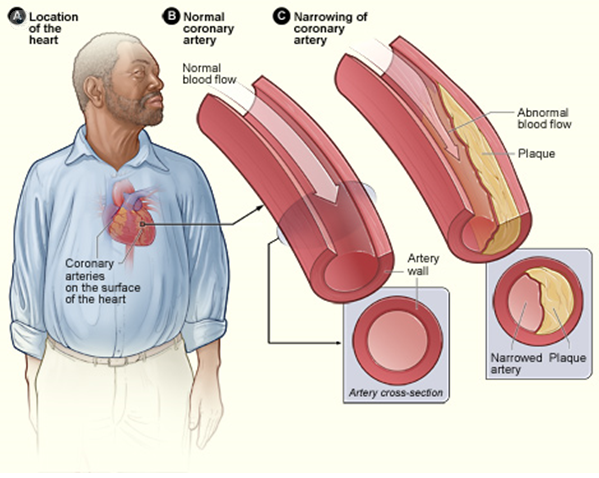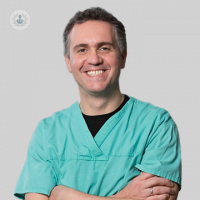Coronary heart disease and stents
Written by:Coronary heart disease is one of the UK's leading causes of death and the most common cause of premature death. In the UK, one in seven men and one in twelve women die from coronary heart disease, according to the British Heart Foundation.
We recently sat and spoke with one of our expert cardiologists, Dr Oliver Guttman, to find out how this disease can be treated.

What is coronary heart disease?
Coronary arteries (blood vessels around the heart) supply the heart with blood and oxygen. They are crucial in keeping the heart healthy.
In some people, the arteries can become narrowed because of fat deposition (atheroma) that is built up in the blood vessel wall. This is commonly known as atherosclerosis, which leads to coronary artery disease.

If the blood vessels become narrow to the point that there is not enough blood and therefore not enough oxygen reaching your heart, you may complain of discomfort in the chest. This is called angina and typically occurs when you are exerting yourself, it can eventually lead to a heart attack.
The initial treatment for this is certain medicines to control the angina symptoms. In some people, medication is not enough to control the symptoms and you may need to have treatment to improve the blood supply of your heart.
There are two main types of treatment:
Coronary angiogram with angioplasty with a stent. A coronary angiogram, also called a cardiac catheterisation, allows the doctor to see the blood vessels around the heart and see where the narrowing is.
Many patients, who undergo an angiogram, will go on to have an angioplasty. An angiogram involves squashing the atheroma against the walls of the blood vessels, making the inside of the vessel wider.
What does an angiogram procedure involve?
You are asked not to eat or drink a few hours before the procedure. The angiogram takes place in a special room called the catheter lab. You then meet the team consisting of the doctor performing the procedure, a nurse, a lab technician and a radiographer. You're then asked to lie on a table and an X-ray machine will move around your chest.
A small tube will be inserted into your wrist or your groin after you receive a local anaesthetic and some medication to relax you.
Equipment can then be passed into the blood vessels around your heart under X-ray guidance. This consists of tubes called catheters through which the doctors can insert tiny wires and balloons into your heart to treat the narrowing. Once the narrowing has been ballooned, a stent is placed to keep the blood vessels open.
The procedure usually takes about an hour and most patients will have the procedure as a day case and go home on the same day.
What are stents?
A stent is a small metal mesh tube which is inserted into the heart arteries to act as a scaffold to keep them open.
Are there any alternative treatments to stents and are they as effective?
In some circumstances, stent treatment might not be sufficient or optimal treatment. In that case, your cardiologist might advise you to have a coronary artery bypass graft surgery. This is open-heart surgery performed by a cardiothoracic surgeon and involves bypassing the narrowing of the coronary arteries. This surgery is very effective.
What are the benefits of stents?
Stents keep the blood vessels open and therefore reduce the symptoms of angina.
Can stents be removed once placed in the body?
Once a stent has been implanted it cannot be removed and will be part of your body.
Are stents safe?
Stents are very safe, but there are risks associated with the procedure. A small number of people have complications. These can include needing emergency bypass surgery. There is also a low risk of having a heart attack or a stroke or die during the procedure. The risk of a serious complication for a coronary angiogram is 1 in every 1000 people.
Sometimes the blood vessel with the stent can become narrow again. This is called in-stent restenosis. To reduce the risk of this happening your cardiologist generally uses a drug eluting stent. Following a stent procedure, you will have to take blood-thinning medication.
How long does it take to recover from a stent implantation?
When you get home, you have to keep an eye on the area where the catheter was inserted for a few days. You might have some bruising and tenderness. Most people find that they are back to normal after a few days. It is advisable to increase your activity gradually. If you had a stent to treat a heart attack, the recovery might take slightly longer.
If you're concerned about your cardiovascular health or think treatment for coronary heart disease may be necessary, we recommend booking an appointment with a leading-expert in cardiology, such as Dr Guttmann, via their Top Doctors profile.


